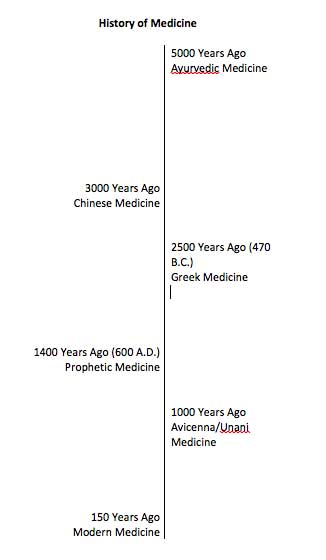Up until 150 years ago, medicine around the world was very similar. Whether you were in the Himalayas or in the African jungles, from the Asian continent to South America ~ medicine had a common thread. Medicine was related to food and vice versa; disease, quite simply, was a direct result of an imbalance created by improper food consumption.
But how is it that the medicine and practices from various cultures around the world all arrived to more or less the same conclusion? One which states, in essence, that our body has a balance and when it is imbalanced, it will lead to disease? These are not cultures that were at their height of knowledge and growth in the same time period, nor was there any communication like there is today, or places where a person could read the work of others, like on the internet.
Today, around the world, medical practice still falls into two, albeit quite different, categories: there is mainstream Western medicine, which slowly deviated from traditional medicine about 150 years ago; and there are also those who have upheld and preserved traditional medicine. Both are rich in knowledge and advancement, but both would be a lot stronger if they were united and building upon each other’s strengths rather than arguing their differences. Modern medicine has strayed so far from its origins that there is little left within its foundations that even remotely resembles its strong beginnings.
The most compelling demonstration of these same beginnings is also one of the most powerful notions in traditional medical systems: the concept of disease. Disease is believed to be caused by dystemperament—the imbalance I spoke of earlier—within an individual or an organ. The sameness in the concept of disease that can be found throughout medical history (prior to modern medicine) clearly demonstrates that these traditional medical systems all held similar beliefs regarding the human body and its state of balance. Beliefs that different medical systems from different times and places were acquired completely independently of one another. This theory of balance is derived through the human experience in research, experimentation, observation and analysis, by many different specialists across the globe, over a period of thousands of years. The very fact of their sameness despite unique experiences and times only reinforces the legitimacy of traditional medicine.
There is truth in something when all paths lead back to the same door.
 I’m going to briefly touch upon four areas of traditional medicine, divided from one another in time and location, to show you the clear similarities and therefore the strong foundations to medical knowledge that they provide. The four areas are Ayurvedic Medicine, Chinese Medicine, Greek Medicine and Prophetic Medicine. Even a cursory examination of each will demonstrate their subtle differences and profound similarities.
I’m going to briefly touch upon four areas of traditional medicine, divided from one another in time and location, to show you the clear similarities and therefore the strong foundations to medical knowledge that they provide. The four areas are Ayurvedic Medicine, Chinese Medicine, Greek Medicine and Prophetic Medicine. Even a cursory examination of each will demonstrate their subtle differences and profound similarities.
There are many more fascinating and similar medicines that we could examine, such as Mayan Medicine or Unani Medicine, as there is literally an ocean of knowledge spread over thousands of years across the globe. The four traditions that I have chosen are exemplary of a range of time and location, however, and will give you a clear view of the evolution of medicine, from ancient times to the present.
In the span of 5000 years, four major medical systems have all shared similar beliefs about maintaining good health and those beliefs all centered on food, digestion and balance.
The concept of disease was consistent among all medicine until the 1800s. With the advancement of chemistry and the ability to prove or abandon concepts based on a test tube analysis, modern medicine slowly began its deviation. The pivotal moment was with Louis Pasteur’s germ theory, which changed how disease was diagnosed and treated for the first time in history. Antibiotics replaced herbal medicine and the arrogance and disrespect for medical history took off.
Now, it’s easy to say that yes, modern medicine also focuses on food balance for optimal health, which is what our food pyramid is all about, but the there is a difference. The standard american diet is focused on calories and proteins, carbs and fats—not thermal energy or the thermal effect of each food on our body, from a metabolic standpoint.
Simply put, according to the standard american diet, you need 2000 calories a day: 50% should be derived from carbs, 30% need to be derived from proteins and 20% need to come from fat, leaving a huge question mark for the consumer. Why? Because not all calories, fats, carbs, and proteins are created equal. Not all get absorbed/metabolized the same way. And not all have the same effect on the body. And not all our body types respond the same way to the same foods.
It is time to go back to the original concept of disease, and continue in our research and modern scientific developments with the imbalance theory as our base. What we will uncover will be pivotal to our future generations’ wellness.

